- today
- perm_identity Rastamax
- label Technical
- favorite 4 likes
- remove_red_eye 8646 views
- comment 0 comments
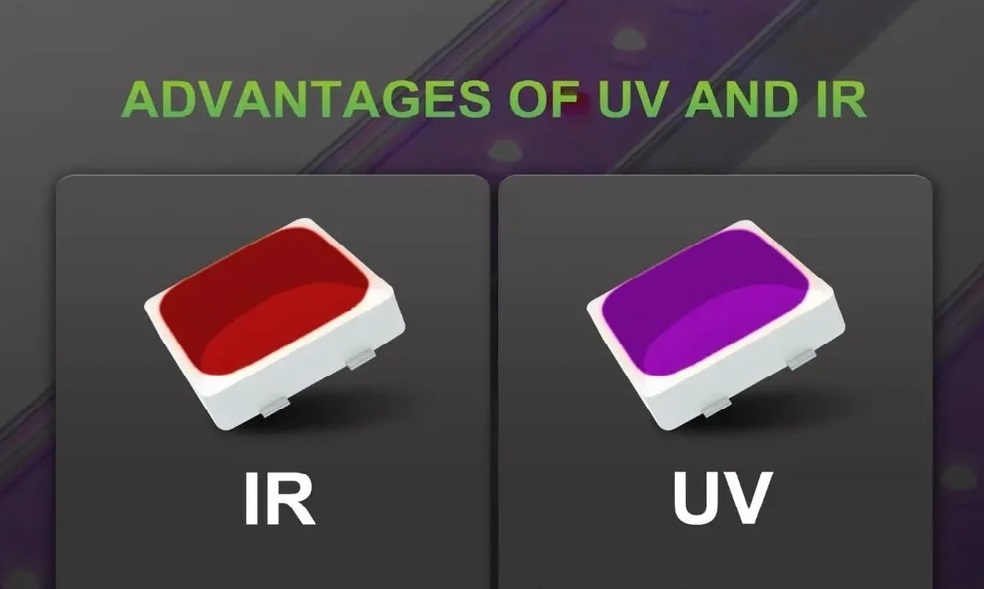
While blue light was previously known to promote leaf growth and red light to promote flower growth, today, scientific advances allow us to better understand the complex relationship between the light spectrum and plant reactions. It has been shown that specific spectra, such as green and ultraviolet, also play an essential role in the regulation of physiological processes, such as pigment production, stress defense or the regulation of circadian cycles. In addition, the role of photomorphogenesis, a process by which plants modify their development in response to light, is now better understood. This phenomenon is influenced by different light spectra, and its control allows to optimize the structure and growth of plants in indoor crops.
The importance of UV and far-red (FR) light for plants
 UV lighting in indoor crops offers several significant technical advantages. It improves the rate of photosynthesis by influencing photoreceptors, such as phytochromes, which regulate various aspects of plant development. It is also known to stimulate the production of various pigments, which can enhance photosynthesis and improve plant growth. In addition, UV exposure can induce an adaptive response that makes plants more resistant to stress and adverse conditions. By judiciously integrating UV, biological processes can be optimized and the efficiency of indoor crops can be maximized.
UV lighting in indoor crops offers several significant technical advantages. It improves the rate of photosynthesis by influencing photoreceptors, such as phytochromes, which regulate various aspects of plant development. It is also known to stimulate the production of various pigments, which can enhance photosynthesis and improve plant growth. In addition, UV exposure can induce an adaptive response that makes plants more resistant to stress and adverse conditions. By judiciously integrating UV, biological processes can be optimized and the efficiency of indoor crops can be maximized.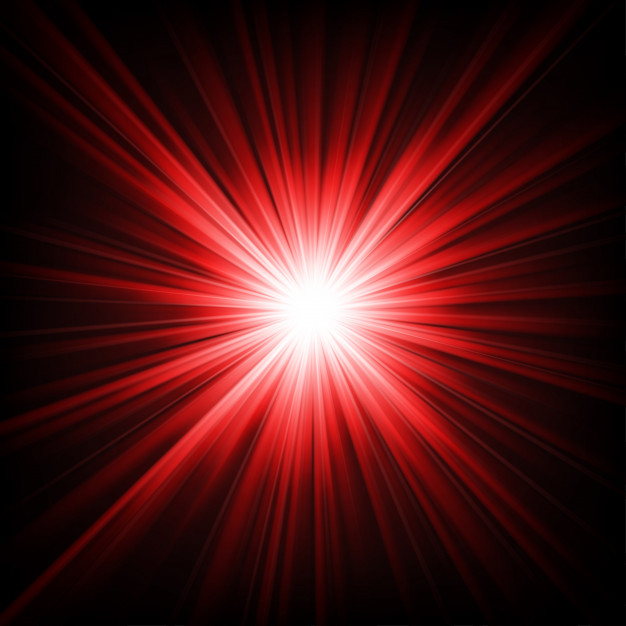 Far infrared (FR) lighting in indoor cultivation has several notable technical advantages. FR stimulates the regulation of phytochromes, particularly phytochrome B, which influences plant morphogenesis, such as stem elongation and leaf formation. FR irradiation can improve plant architecture by promoting a more uniform distribution of light. In addition, it plays a role in the adaptation of plants to variable light conditions, thereby optimizing their growth and yield. Integrating RF into lighting systems therefore makes it possible to adjust and improve the morphological characteristics of plants, which is crucial for maximizing indoor production.
Far infrared (FR) lighting in indoor cultivation has several notable technical advantages. FR stimulates the regulation of phytochromes, particularly phytochrome B, which influences plant morphogenesis, such as stem elongation and leaf formation. FR irradiation can improve plant architecture by promoting a more uniform distribution of light. In addition, it plays a role in the adaptation of plants to variable light conditions, thereby optimizing their growth and yield. Integrating RF into lighting systems therefore makes it possible to adjust and improve the morphological characteristics of plants, which is crucial for maximizing indoor production.
Beneficial effects on plant health
The beneficial effects of adding UV and RF on crop health are now much better understood thanks to recent research. While these spectra were previously little studied, scientific advances in recent decades have clearly demonstrated their key role in regulating plant growth and development. Although some nuances remain to be explored, the effectiveness of these technologies is now widely recognized and mastered. Here is an overview of the concrete benefits that UV and FR can bring to your crops:
-
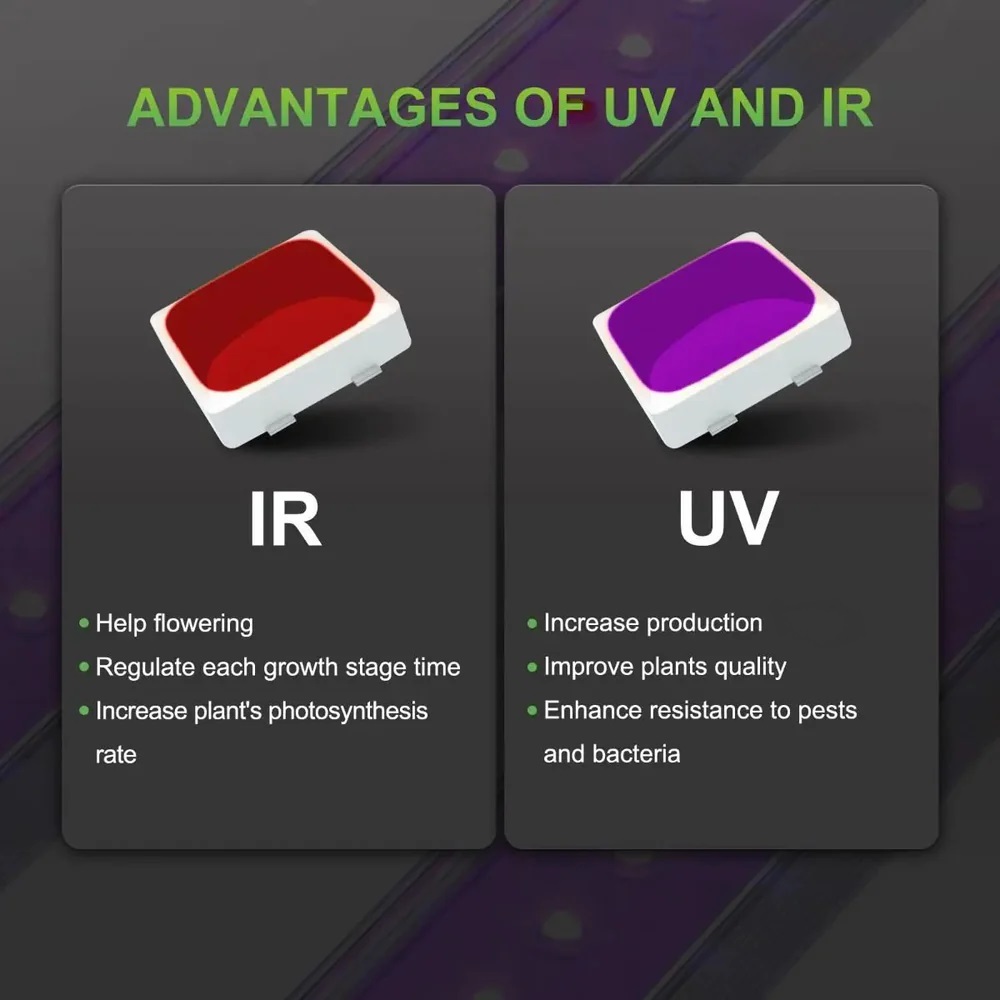 Production of natural protective compounds
Production of natural protective compounds- Improved resistance to diseases and parasites
- Limiting the appearance and proliferation of molds
- Reducing the use of phytosanitary products
- Increased flavors, aromas, andpowerof plants
- Controlled morphology adapted to the growing space
- Appearance of more intense natural colors
- Normalization of fruiting/ripening of the lower parts
- Overall improvement in crop quality/quantity
How to use UV/FR LED bars to maximize your crops
UV and FR exposure must be carefully controlled to avoid negative effects such as burns or excessive stress on the plants. It is recommended to Start with low intensities and gradually increase exposure to allow plants to adapt. This can be achieved by limiting the daily duration of exposure to these spectra to avoid energy overload, while ensuring an optimal balance with other light sources.
 UV and RF requirements vary depending on the type of crop and growth phase. For example, some species of aromatic or medicinal plants particularly benefit from increased UV exposure to enhance the production of active compounds, while RF is essential in the flowering phases or to optimize the structure of fruiting plants. It is therefore important to adjust these spectra according to each stage of development, from germination to harvest.
UV and RF requirements vary depending on the type of crop and growth phase. For example, some species of aromatic or medicinal plants particularly benefit from increased UV exposure to enhance the production of active compounds, while RF is essential in the flowering phases or to optimize the structure of fruiting plants. It is therefore important to adjust these spectra according to each stage of development, from germination to harvest.
Using FR alone in conjunction with reduced main lighting can stimulate the elongation of internodal spaces, which can be useful when filling our growing space. Adding UV in proportion to FR on normal main lighting will result in normal morphological development while benefiting from the advantages of adding these wavelengths, while using UV without FR can lead to an intense rapprochement of new internodes.
The recommended doses of UV and FR vary according to the growth phases of the plants. To simplify the matter, let's consider the following recommendation (as an indication for Hortimol LE90 in 1.5mx1.5m):
1 dose = 15 min(100%) = 30 min(50%)
During the vegetative phase, it is advisable to gradually apply 2 to 4 doses of UV/IR per day, which promotes vigorous growth and the development of a solid structure. On the other hand, during the flowering phase, it is preferable to reduce exposure to 1 to 2 doses per day. This reduction allows the plants' energy to be concentrated on the production of flowers and fruits while avoiding excessive stress that could affect their quality. These adjustments should be considered as a guideline to adapt to your situation in order to guarantee an optimal balance between growth and yield.
There is no evidence yet of the usefulness of doing this, but it is common practice to send these doses in one block during the last two hours of the light cycle, which is now child's play with the new Hortimol LE90A additional armature
The characteristics of the Hortimol LE90A model
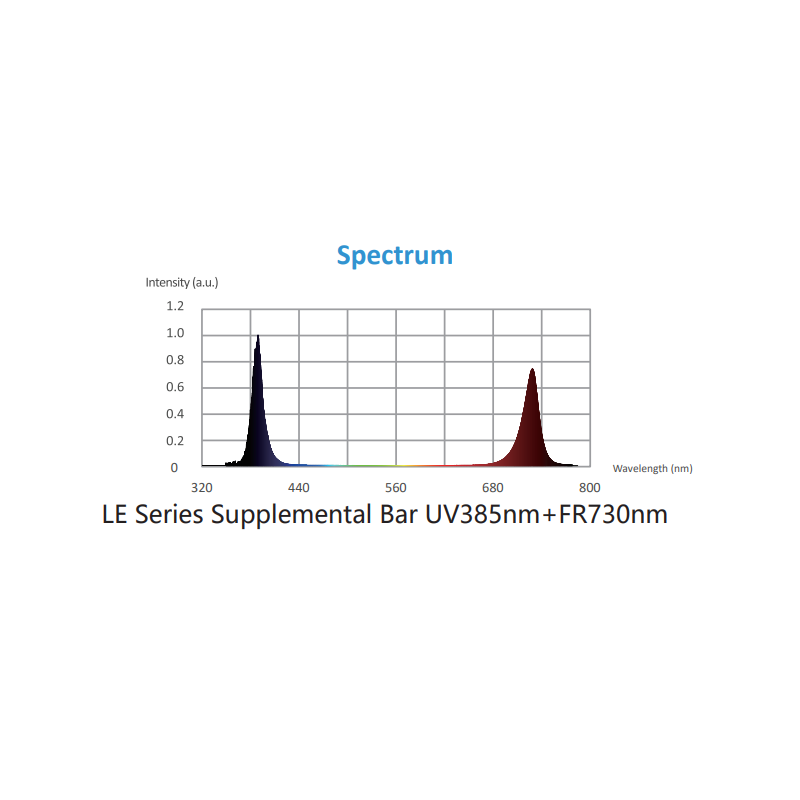 The Hortimol LE90A model is ideal for supplementing lighting with UV and RF thanks to its perfectly adapted technical characteristics. Its bilateral luminescence and wide beam angle ensure uniform light distribution, maximizing crop coverage. Compatible with various LED fixtures and brands, it easily integrates into any existing installation. Its adjustable and easy-to-install design allows for rapid adaptation according to crop needs. In addition, the integrated switch allows separate control of the UV and FR spectra, providing precise exposure management. With high-performance LED chips, an efficient cooling system and certifications that guarantee safety and durability, the Hortimol LE90A is a reliable solution for optimizing indoor plant cultivation.
The Hortimol LE90A model is ideal for supplementing lighting with UV and RF thanks to its perfectly adapted technical characteristics. Its bilateral luminescence and wide beam angle ensure uniform light distribution, maximizing crop coverage. Compatible with various LED fixtures and brands, it easily integrates into any existing installation. Its adjustable and easy-to-install design allows for rapid adaptation according to crop needs. In addition, the integrated switch allows separate control of the UV and FR spectra, providing precise exposure management. With high-performance LED chips, an efficient cooling system and certifications that guarantee safety and durability, the Hortimol LE90A is a reliable solution for optimizing indoor plant cultivation.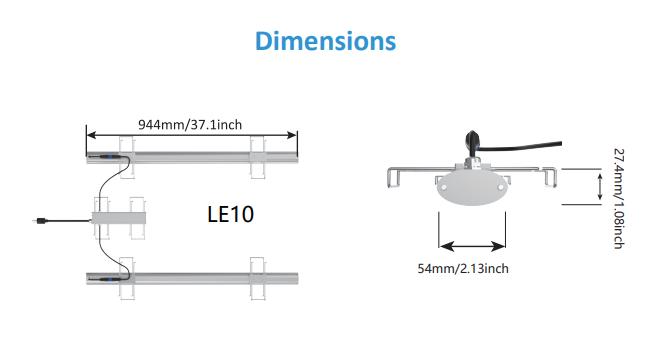
-
- Bilateral luminescence and wide beam angle
- Compatibility with various LED fixtures and brands
- Adjustable design and easy to install
- Switch for separate control of UV and FR spectrum
.
Related products
Hortimol LE90A10 UV+FR (90W)
90W (UV 50w + FR 40w)
Fanless Design, IP65 Waterproof, optional 0-10V Dimming
Osram LEDs
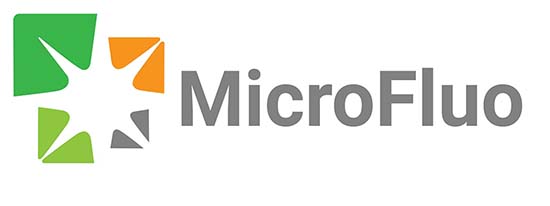


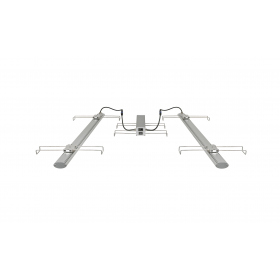
Comments (0)